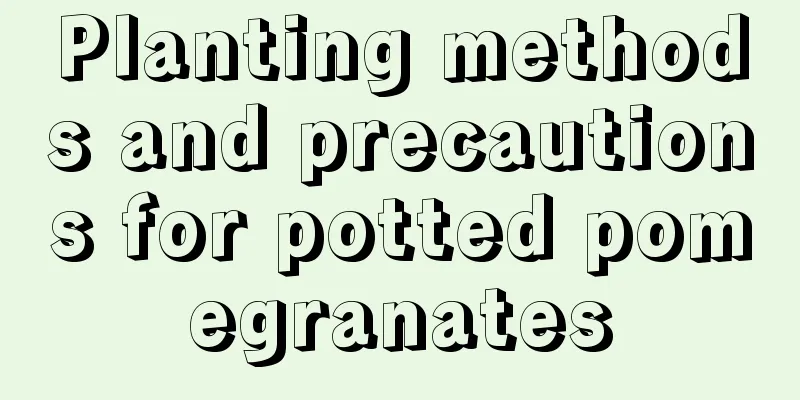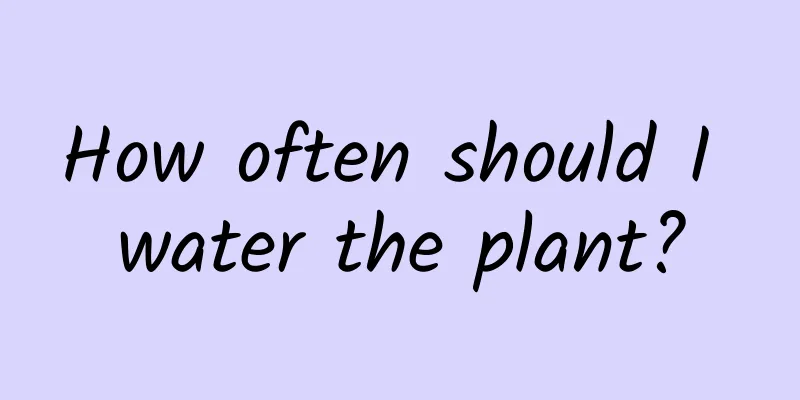Planting methods and precautions for potted pomegranates

|
Pomegranate is an evergreen tree. The size of potted pomegranates is usually controlled through pruning to make it a smaller shrub-like plant. It has a beautiful tree shape, small and exquisite leaves, brightly colored blooming flowers, and can also produce small fruits. It is very suitable for viewing and decorating indoor environments. Let's talk about the planting methods and precautions of potted pomegranates . 1. Choose the right flower pot and soil Potted pomegranates require a flowerpot that is breathable and well-drained, and generally clay or ceramic pots are chosen. The soil should be loose and fertile. You can mix leaf mold, garden soil and sand in a ratio of 3:2:1 and add a small amount of organic fertilizer . 2. Planting pomegranate seedlings Choose healthy and strong pomegranate seedlings, preferably with flower buds or fruits. Place a layer of crushed tiles or gravel in the bottom of the pot to aid drainage. Then fill the flowerpot with soil, place the pomegranate seedling in the pot, bury the roots, and gently compact the soil with your hands. 3. Light and temperature Potted pomegranates prefer plenty of sunlight and can be placed on a balcony or windowsill, receiving at least 6 hours of direct sunlight a day. The suitable growth temperature for potted pomegranates is 15-25℃. Avoid high temperature exposure in summer and prevent low temperature damage in winter. If the temperature is below 5℃, move it indoors in time. 4. Watering and fertilizing Potted pomegranates are not tolerant of waterlogging, so watering should be moderate, with the soil surface dry. Generally, water the plants every 2-3 days in spring and summer, and every 5-7 days in autumn and winter. Fertilization should be timely and appropriate. During the spring budding period and the summer flowering and fruiting period, more organic fertilizer and compound fertilizer should be applied every 10-15 days. Reduce fertilization in autumn and winter to avoid excess nutrition. 5. Pruning and shaping Potted pomegranates should have their branches and leaves pruned regularly to maintain good shape and ventilation and light transmission. Generally, pruning is done before budding in spring and after fruit picking in autumn to remove undesirable branches and leaves that are too dense, too long, crossed, yellowed, infested with insects, and to retain thick, healthy branches with growth potential. At the same time, you can shape and prune the pomegranate according to your preferences to make the potted pomegranate more beautiful. 6. Pest and disease control Check the plants regularly and watch out for possible pest and disease problems, such as aphids, powdery mildew, etc. If pests or diseases are found, they can be treated with appropriate pesticides or organic control methods. That’s it |
<<: How to grow lily of the valley well and how to prevent and control diseases
>>: Lily of the valley bulb planting methods and precautions, how to choose bulbs
Recommend
Can I plant tomato seeds directly?
Can tomato seeds be planted directly? Tomato seed...
How does Christmas cactus survive the summer?
Summer is the dormant period of Christmas cactus,...
Camellia potted planting method
1. Cutting Cuttings are usually taken in spring a...
How to prune pine red plum
When to prune pine red plum It is usually more ap...
Why are the leaves of Anthurium turning yellow, burnt and dry?
Anthurium is also called Spathiphyllum and Peace ...
Winter pruning and precautions for plum blossoms
How to cut plum blossoms in winter Light cut Gent...
Why are the leaves of cyclamen yellow?
Too much light Cyclamen is a light-loving plant, ...
What flowers are suitable for balcony flower boxes? Four classic balcony flower boxes for planting flowers
What flowers are suitable for balcony flower boxe...
How to grow jade tree
1. Lighting When caring for jade plants at home, ...
How to trim ginseng euphorbia beautifully
When is the best time to prune ginseng euphorbia ...
Cultivation technology and propagation method of cockscomb
Cockscomb, also known as cockscomb flower, old re...
What soil is suitable for planting Polygonatum sibiricum
The soil for growing Polygonatum is generally loo...
How to repot a rubber tree
1. First, we need to take it out of the original ...
Cultivation methods and precautions for carnations
Carnation is a perennial semi-woody herb, general...
How to propagate black pine and what to pay attention to
Black pine reproduction method When propagating b...









